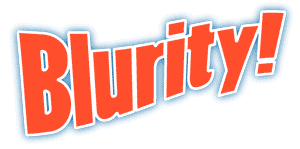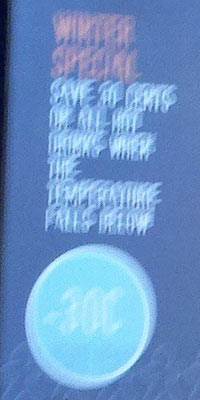(This is the third in a three-part series. It was originally going to be named “Startups are not simple, part 3 of 3”. You may want to start at the beginning)
Blurity, my startup‘s main product, is dead. It will go offline when the server it’s on gets pulled in early October. Poor Blurity. I had such grand visions at the start.

Goodbye little startup
The demise was a long time in coming. The viability of the product (or lack thereof) had been apparent since the spring of 2011, but it took a summer of denial to reach this conclusion. I kept telling myself that “if only the product were better, it would take off.” In other words, I lied to myself.
In case you’re unfamiliar with the product, Blurity removed the blur from blurry photos. The user would upload a blurry photo to the web site, Blurity would process it, and it would return the sharp photo to the user. If the user liked the results, a small fee would remove a watermark from the image.
So what went wrong? Let’s look at the three main problems.
#1 Poor match between market needs and product capabilities
Over the course of a year and a half, I built three totally separate blur removal engines. While the first version was worse than useless (and super slow), the third version was pretty good at removing motion blur. If only the market cared about motion blur.

Before Blurity (click for full image)

After Blurity (click for full image)
Over that period of time, I talked with friends and strangers, professional and amateur photographers alike, about the idea of blur removal. The frustrating consensus was that the blur removal was a neat trick, but it wasn’t something that they would use. Most said that they either didn’t have problems with motion blur or that they captured enough frames to mitigate the risk of having some be motion blurred.
I also did some limited Adwords advertising, which drove a few thousand people to the site. About 45% of people who arrived at the site from the ads gave Blurity a try: they uploaded a photo and kicked off the deblurring. (I was surprised by the high visit-to-trial conversion rate.) More importantly, that gave me a great sample of what users considered to be blurry photos.
Unfortunately, my idea of a blurred photo did not correspond well to the users’ ideas of blurred photos. Here’s a breakdown of the user-submitted photos by the most significant fault in each image:
- 40% Focus blur
- 30% Trying to enlarge a small image
- 10% Motion blur
- 10% Horribly over-/under-exposed
- 10% Other (including pixelation of faces, JPEG compression artifacts, and large sharp well-exposed images)
Since Blurity worked best on motion blur, that left a lot of disappointed users. Some people made purchases, but often times those “successful” results were no better than the user might have gotten from “unsharp mask” in Photoshop.
# 2 Unsustainable cost structure
The funnel looked like this:
- 45% of visitors to the site tried uploading a photo
- 2% of visitors who uploaded a photo made a purchase
- 5% of visitors who made a purchase asked for a refund
You might be thinking, “Those numbers aren’t really that bad. A 0.9% conversion from visit to purchase is decent.” True, but with a purchase price per image of $1.99, which became $1.8405 after payment fees, I wasn’t exactly rolling in cash. I wasn’t even covering the hosting fees, let alone any advertising costs.
I could have made it if I had traffic, but I didn’t have traffic. I needed thousands of visitors every month, ideally tens of thousands, but I had only hundreds. Blurity was not getting traction.
#3 I lost interest
As the months wore on, I began to get discouraged. Then I ran low on money and turned to consulting to earn more.
I’m tempted to blame my loss of interest on the distraction of a full-time consulting gig, but that isn’t true. I managed to put together a total redesign of the site and build an entirely new deblurring engine during the evenings and weekends in late 2010 and early 2011. What’s more, after my consulting gig ended but before my road trip to every state and every province began, I had all the time in the world — but I felt almost no motivation to work on Blurity.
No, I simply lost interest. I no longer believed that Blurity would change the world, and I no longer saw a way that Blurity would lead to financial independence.
As I mentioned earlier, I was battling a bit of denial, too. I didn’t want to admit to failure.
But you know what? I feel fine. I learned a lot about image processing, multithreaded programming, Ruby, and Rails along the way. I came to understand that the rules about product-market fit do apply to me. I met many other interesting entrepreneurs, investors, and journalists.
I took a shot, I missed, and life will go on.
So what comes next?
Put simply, I’m not sure what will come next. I learned a lot about image processing while building Blurity, so with the coming rise of computational photography, including lightfield cameras, I might make another play in that area. Or I might punt and go back to doing consulting. We’ll see.
The important thing is that I will no longer be weighed down by the sinking ship that was Blurity.






Recent Comments